The Beano is the longest running British children's comic magazine, published by DC Thomson in Dundee, Scotland. The comic first appeared on 30 July 1938, and was published weekly. In September 2009, The Beano's 3,500th issue was published. One of the best selling comics in the UK, along with The Dandy, the weekly circulation of The Beano in April 1950 was 1,974,072. The Beano is currently edited by John Anderson. Each issue is published on a Wednesday, with the issue date being that of the following Saturday. The Beano reached its 4,000th issue on 28 August 2019.
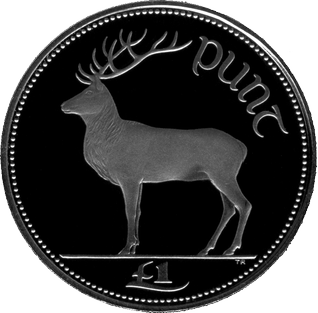
The Irish pound was the currency of Ireland until 2002. Its ISO 4217 code was IEP, and the usual notation was the prefix £. The Irish pound was replaced by the euro on 1 January 1999. Euro currency did not begin circulation until the beginning of 2002.

James Bigglesworth, nicknamed "Biggles", is a fictional pilot and adventurer, the title character and hero of the Biggles series of adventure books, written for young readers by W. E. Johns (1893–1968). Biggles made his first appearance in the story The White Fokker, published in the first issue of Popular Flying magazine and again as part of the first collection of Biggles stories, The Camels Are Coming. Johns continued to write "Biggles books" until his death in 1968. The series eventually included nearly a hundred volumes – novels as well as short story collections – most of the latter with a common setting and time.
William Earl Johns was an English First World War pilot, and writer of adventure stories, usually written under the pen name Capt. W. E. Johns. He was the creator of the fictional air-adventurer Biggles.

Look and Learn was a British weekly educational magazine for children published by Fleetway Publications Ltd from 1962 until 1982. It contained educational text articles that covered a wide variety of topics from volcanoes to the Loch Ness Monster; a long running science fiction comic strip, The Trigan Empire; adaptations of famous works of literature into comic-strip form, such as Lorna Doone; and serialized works of fiction such as The First Men in the Moon.
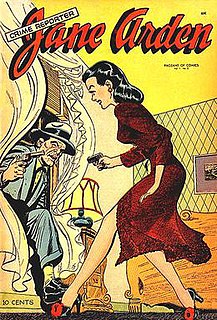
Jane Arden was an internationally syndicated daily newspaper comic strip which ran from November 26, 1928 to January 20, 1968. The title character was the original "spunky girl reporter," actively seeking to infiltrate and expose criminal activity rather than just report on its consequences and served as a prototype for later characters such as Superman supporting character Lois Lane and fellow comic strip heroine Brenda Starr, Reporter. Pulitzer Prize-winning columnist Mary McGrory credited Jane Arden with instilling her interest in journalism.
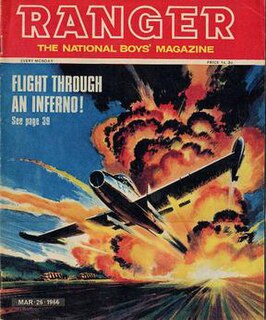
Ranger was a British comic book magazine, with occasional printed stories, published by Fleetway Publications for 40 un-numbered issues between 18 September 1965 and 18 June 1966. The title was then incorporated into Look and Learn from issue 232, dated 25 June 1966.
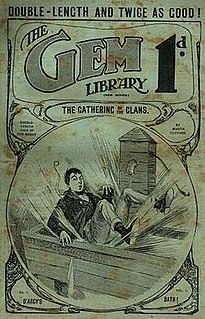
The Gem (1907–1939) was a story paper published in Great Britain by Amalgamated Press in the early 20th century, predominantly featuring the activities of boys at the fictional school "St. Jim's". These stories were all written using the pen-name of Martin Clifford, the majority by Charles Hamilton who was more widely known as Frank Richards the creator of Billy Bunter. Many issues also included a shorter serial story ; these parts of the paper were not written by Charles Hamilton.
A story paper is a periodical publication similar to a literary magazine, but featuring illustrations and text stories, and aimed towards children and teenagers. Also known in Britain as "boys' weeklies", story papers were phenomenally popular before the outbreak of the Second World War.
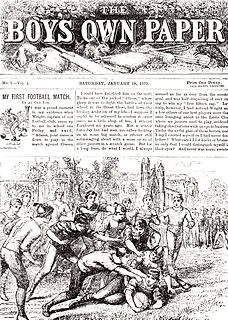
The Boy's Own Paper was a British story paper aimed at young and teenage boys, published from 1879 to 1967.

The Girl's Own Paper (G.O.P.) was a British story paper catering to girls and young women, published from 1880 until 1956.

Tales of Wonder was a British science fiction magazine published from 1937 to 1942, with Walter Gillings as editor. It was published by The World's Work, a subsidiary of William Heinemann, as part of a series of genre titles that included Tales of Mystery and Detection and Tales of the Uncanny. Gillings was able to attract some good material, despite the low payment rates he was able to offer; he also included many reprints from U.S. science fiction magazines. The magazine was apparently more successful than the other genre titles issued by The World's Work, since Tales of Wonder was the only one to publish more than a single issue.
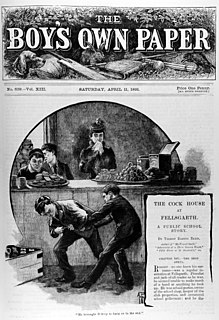
Magazines intended for boys fall into one of three classifications. These are comics which tell the story by means of strip cartoons; story papers which have several short stories; and pulp magazines which have a single, but complete, novella in them. The latter were not for the younger child and were often detective or western in content and were generally greater in cost. Several titles were published monthly whereas the other two categories were more frequent.

Chums was a boys' weekly newspaper started in 1892 by Cassell & Company and later, from 1927, published by Amalgamated Press. The publisher gathered the weekly paper into monthly and annual editions. The monthly versions were published on the 25th of the month, and up to November 1920 included all the content of the weekly editions. From then on, the monthly editions had all the story content of the weeklies, but left out the covers. This left a gap which was then filled by short stories, articles and even serials that were not included in the weekly edition.The serial ceased publication in 1941.

Flying Aces was a monthly American periodical of short stories about aviation, one of a number of so-called "flying pulp" magazines popular during the 1920s and 1930s. Like other pulp magazines, it was a collection of adventure stories, originally printed on coarse, pulpy paper but later moved to a slick format. The magazine was launched in October 1928 by Periodical House, Inc. It featured stories written and illustrated by known authors of the day, often set against the background of World War I. Later issues added non-fiction aviation articles, as well as articles and plans for model airplanes. The latter became more prominent, and eventually the magazine was renamed Flying Models, and catered exclusively to aeromodeling hobbyists.

The Hotspur was a British boys' paper published by D. C. Thomson & Co. From 1933 to 1959, it was a boys' story paper; it was relaunched as a comic in October 1959, initially called the New Hotspur, and ceased publication in January 1981.
Our Young Folks: an Illustrated Magazine for Boys and Girls was a monthly United States children’s magazine, published between January 1865 and December 1873. It was printed in Boston by Ticknor and Fields from 1865 to 1868, and then by James R. Osgood & Co. from 1869 to 1873. The magazine published works by Lucretia Peabody Hale, Harriet Beecher Stowe, Horatio Alger, Oliver Optic, Louisa May Alcott, Thomas Bailey Aldrich, John Greenleaf Whittier, and Henry Wadsworth Longfellow. In 1874 the periodical merged with St. Nicholas Magazine.
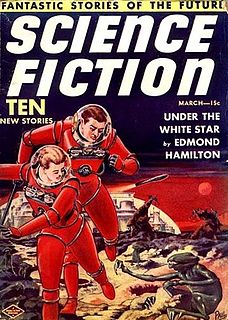
Future Science Fiction and Science Fiction Stories were two American science fiction magazines that were published under various names between 1939 and 1943 and again from 1950 to 1960. Both publications were edited by Charles Hornig for the first few issues; Robert W. Lowndes took over in late 1941 and remained editor until the end. The initial launch of the magazines came as part of a boom in science fiction pulp magazine publishing at the end of the 1930s. In 1941 the two magazines were combined into one, titled Future Fiction combined with Science Fiction, but in 1943 wartime paper shortages ended the magazine's run, as Louis Silberkleit, the publisher, decided to focus his resources on his mystery and western magazine titles. In 1950, with the market improving again, Silberkleit relaunched Future Fiction, still in the pulp format. In the mid-1950s he also relaunched Science Fiction, this time under the title Science Fiction Stories. Silberkleit kept both magazines on very slim budgets throughout the 1950s. In 1960 both titles ceased publication when their distributor suddenly dropped all of Silberkleit's titles.













